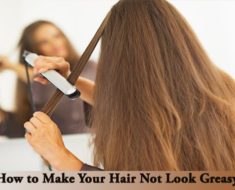Hair loss is a normal feature of aging, more often for men and often hereditary. Women are not immune, however, and either patchy or complete hair loss can occasionally be a feature of various skin and some medical disorders. Until recently there was not much to be done for thinning hair, except for wigs and toupees and creative combing and styling. Now i discuss about How to Stop Hair Loss And Regrow Hair Naturally In 7 Best Ways.
The discovery that certain forms of testosterone were involved in hair loss and that altering hormonal balance could affect this, and the observation that certain medications introduced for other purposes like the treatment of high blood pressure could also stimulate hair growth, led to the marketing of several prescription drugs for the treatment of hair loss. These often work well, and some of them are now available in generic form or even sold over the counter, but some people have problems with them and others would prefer to address the problem by natural or non-drug means.
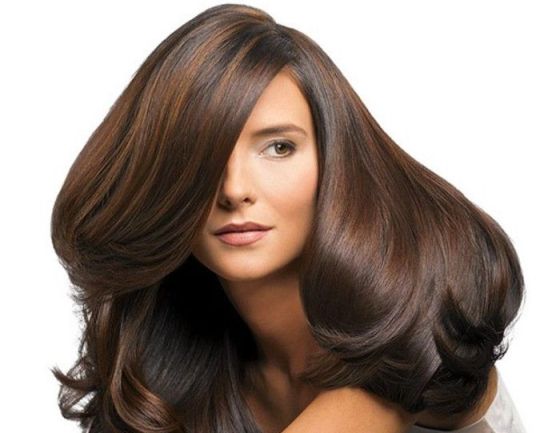
There are several physical measures you can take regarding your skin and your scalp that will help regrow hair naturally, and several nutritional changes and supplements, herbal medicines and preparations and habits of lifestyle and of mind that have been shown to be effective at turning hair loss around for men and women.
#01. What Not To Do:
Table of Contents
The first way to regrow hair naturally is to stop doing things to the hair and scalp that damage hair or inhibit hair follicles, or that allow hair to fall out more readily. Hot appliances like rollers, driers and irons will at a minimum damage the cuticle that surrounds and protects the strands of hair and lead to split ends and dry, frizzy hair.
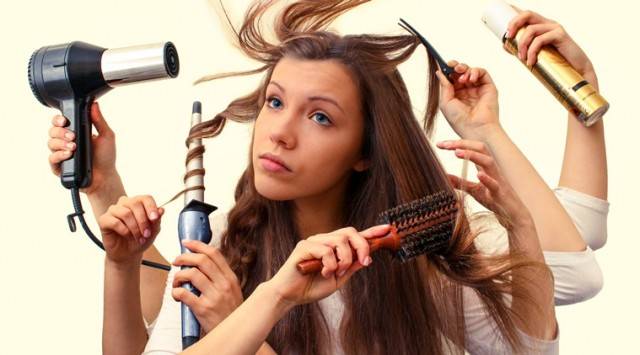
Beyond that, heat and mechanical pressure can damage the root and lead to loss of hairs, as can chemical treatments such as permanents for those with straight hair who want it to be curly, or straighteners for people whose hair is already curly. Both professional and mass-market coloring preparations have chemicals in them that can affect hairs temporarily or permanently, and should be avoided if your hair is thinning.
There is no substitute for washing your hair at least occasionally, but many shampoos, conditioners and styling products contain harsh chemicals that can cause irritation or allergic reaction in the scalp that can result in hair loss.
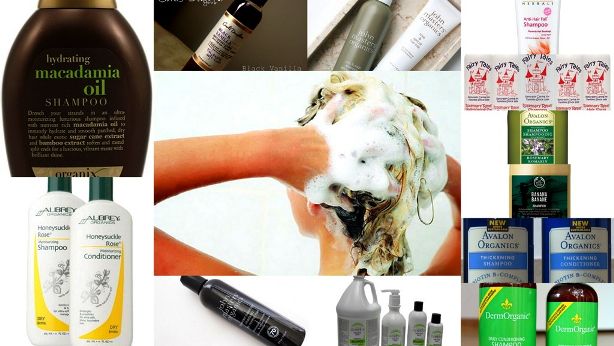
These ingredients include artificial colors and fragrances, which are sometimes listed as “parfum”, alcohols such as propylene glycol and isopropyl alcohol, other alcohol derivates like phthalates that are used to regulate the thickness or viscosity of hair-care products and parabens, synthetic derivatives of acids that are widely used as preservatives. Cutting back on shampooing and using nontoxic products with identifiable natural ingredients are very good ways to start to regrow hair.
Certain ways of wearing the hair may also contribute to hair loss. Ponytails, braids or other tight styles put strain on hair roots, and can pull hair out. If you wear tight styles every day, hair may stop growing permanently in the areas it is pulled from, which can cause a bald patch. Looser updos, braids or ponytails can give hair control without pulling any out or stressing the roots.

If loose or falling hair are a problem, do not comb or brush your hair when it is wet, because you will lose more of it. A wooden comb or brush will not abrade the scalp or damage the hair roots as plastic utensils can, and a wide-tooth comb is gentler to new growths of hair than a fine comb, and also massages the scalp and helps to distribute sebum, the natural oil of the scalp, to the hairs.
#02. Diet and Nutrition:
An unhealthy and unbalanced diet will lead to hair that is not properly balanced nutritionally and not in the best physical condition. Hair needs protein for strength and growth, and the recommended amount daily is either four or five servings a day of dairy and beans or two or three servings of meat, usually about 3 ounces each.

A more than adequate amount of essentially fatty acids, especially omega-3 ones, is important for scalp health and to prevent inflammation of the hair follicles and roots. These can be obtained from fish, eggs, seeds and nuts. It is harder to eat healthy when every meal is more or less the same, so many nutritionists recommend 6 to 8 servings a day of various vegetables, a changing assortment of grains and legumes, different lean meats every day and two to four kinds of fruit.
Certain nutrients are particularly important for both men and women. B vitamins generally and vitamin B7 (biotin) particularly, strengthen hair follicles and enhance the formation of the cuticle in nails and around the hairs. Hair follicles are inhibited by the sex hormone dihydrotestosterone (DHT), which is present in both males and females, and medications effective for hair regrowth such as minoxidil or Rogaine may achieve their effect this way.

B vitamins as well as zinc, magnesium and copper also protect the follicles from DHT so that more hair can be produced for a longer period. Other nutrients like gotu kola, nettle root and saw palmetto also increase blood flow to the skin, scalp and hair follicles, and therefore protect the follicles and encourage hair growth.
The thyroid gland has much to do with the amount, texture and health of hair, and hair loss is a common feature of hypothyroidism. The diagnosis and treatment of frank hypothyroidism needs to be carried out by a physician, but optimal thyroid function and optimal hair health may be helped by iodine-rich sea vegetables like kelp, nori, dulse, kombu and wakame. Spring or distilled water may be better than tap water, which often contains fluorine and chlorine that interfere with iodine absorption. The herb bladderwrack, which is another type of seaweed, has also been recommended.
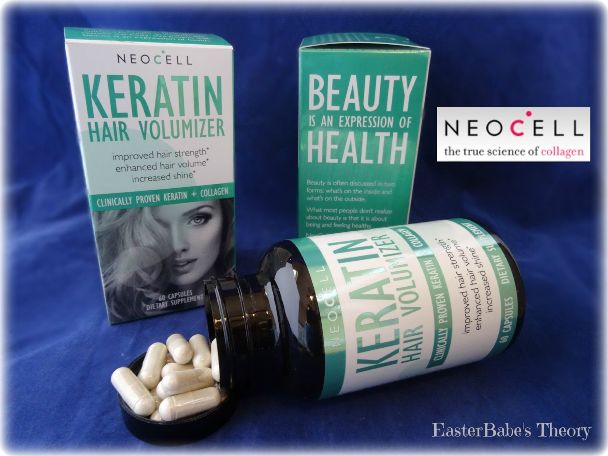
The body’s production of keratin, another protein important in hair strength and integrity, can be enhanced, and follicle health also enhanced, by methylsulfonylmethane (MSM). MSM is a sulfur-containing compound also known as DMSO2 or methyl sulfone that is thought to have antioxidant and anti-inflammatory effects.
#03. Lifestyle:
- If enhancing blood flow to the scalp and follicles facilitates hair growth, it follows that things that constrict blood vessels and impair blood flow are harmful to follicles and hair, and smoking certainly has that effect and is important to quit if you wish to regrow hair. Regrowing hair is also easier without the use of alcohol, because even modest alcohol consumption raises estrogen levels and depletes zinc, both of which impair the function of the hair follicles.
- Prolonged or recurrent stress is a major factor in causing hair loss, so whatever can be done for stress management will enhance its regrowth.
- Exercise is helpful in several ways, chiefly by producing endorphins and other chemicals that can diminish stress but also by clearing blocked hair follicles through sweating and by increasing blood flow in the scalp. Yoga, tai chi and various kinds of meditation and mindfulness are also effective for stress reduction and hair protection.
- Sleep deprivation or poor sleep quality may contribute to hair loss, and some writers have recommended sleeping on a silk or satin pillowcase, which may improve sleep and cause less scalp friction and perhaps hair damage.
#04. Things to do to the Scalp:
Head massage can help clear toxins and enhances scalp blood flow. This is better done once or twice a week with oil, usually olive or coconut but sometimes almond or sesame, Castor oil can also be used, but this is a strong oil and should be mixed with olive or another more neutral oil.
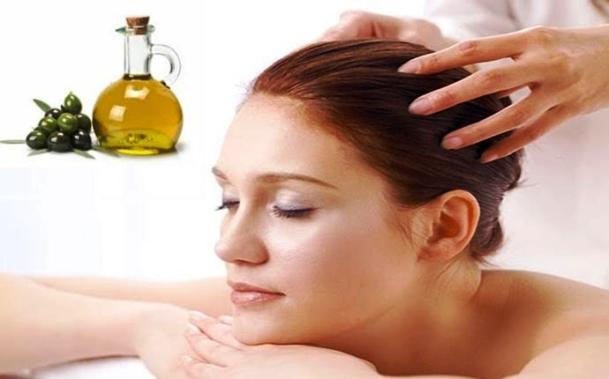
The oil can be rubbed in for about 15 minutes with the pads of the fingers, and can stay on all night if desired, or you can wash it off after 30 minutes to an hour.
An herbal rinse after shampooing is a good way to get safe and effective plant nutrients into your haie. Commonly-used herbs, steeped in hot water like tea and then allowed to cool before applying to the hair, include chamomile, hibiscus, rosemary, marigold, lavender, lemon, orange, sage, horsetail, mint or nettle.
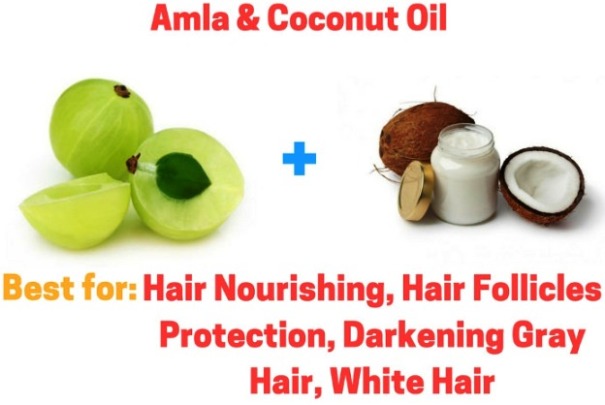
Amla or Indian gooseberry contains amino acids that are the precursors of proteins, minerals and vitamin C and antioxidant flavonoids and tannins. The berry can be applied to the hair as an infusion, amla oil or amla juice in coconut oil can be used for a massage or the fresh or dried fruit can be eaten, which is also good for detoxification.
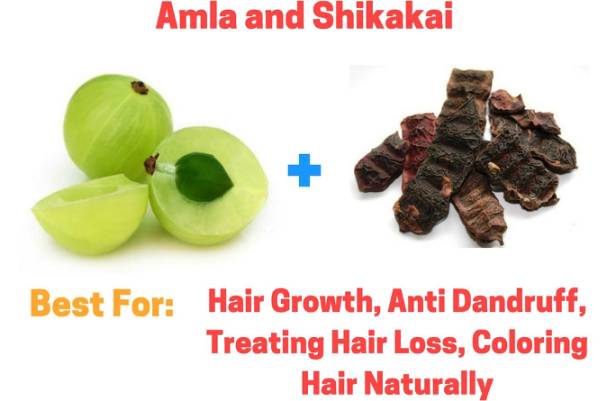
The name of the fruit of the Indian acacia shrub, Shikakai, means “hair fruit” and attests to its ancient use for hair care there. The powdered fruit can be combined with powdered reethaberries (soapnuts) from members of the Lychee family that grow in Asia but also in Hawaii and the American South, and mixed with amla juice and oil, then put on the hair for an hour or longer.
When you shampoo you can add baking powder to the shampoo to increase the volume of the air. Mixing the shampoo with gelatin powder will strengthen the hairs and give hair more volume. A small amount of olive oil loosens and removes debris and is also nourishing to the scalp.
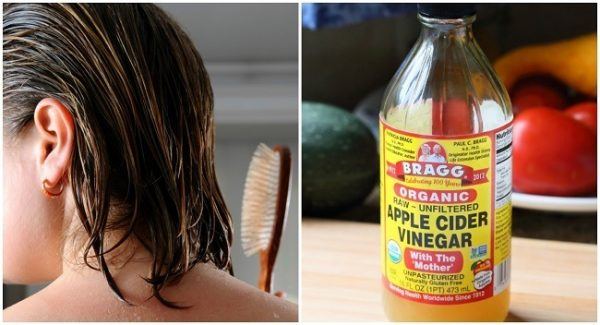
People with oily hair should consider rinsing with apple cider vinegar, which also restores the normal pH balance of the scalp. Another acid from the kitchen, lemon juice, makes oily hair silky and shiny as well. Aloe vera liquid or freshly-squeezed juice on the scalp can be massaged and left on for about an hour under a towel, then rinsed off. These can all boost hair growth.
Finally, you can do hydrotherapy on your scalp and give it a contrast shower by alternating the use of cold and warm towels. You first dampen a towel with warm (not hot) water and wrap hair and scalp in it until the towel is cool; this towel is then replaced with a towel dampened with cold water, until that towel is room temperature. This increases blood circulation in the scalp and stimulates the hair follicles.
#05. Hair Affirmations:
Experts in the relationship of the mind and the body, particularly those who come from Native American cultures or Eastern healing traditions such as Indian medicine or Reiki, recommend that you visualize you hair as you would like it to be while preparing it to be that way as described above.
You will inevitably lose hair, when shampooing, while oiling or during combing, and it is helpful to affirm when this happens that a new healthy hair will grow in place of the one that has been lost. Recommended examples are: my hair is growing and getting healthier, my hair follicles are rejuvenating and growing new care, I am taking good care of my hair.
You should try also not to say anything harsh about your hair and its prospects, even if you are tempted to by falling hair. This affirmation, and visualization of what the hair will be like when it does grow back, diminishes worry and stress and increases optimism. This will keep you in touch with your new hair, as people should try to be with all parts of their bodies.
Last Updated on April 15, 2018 by Marie Johnson




